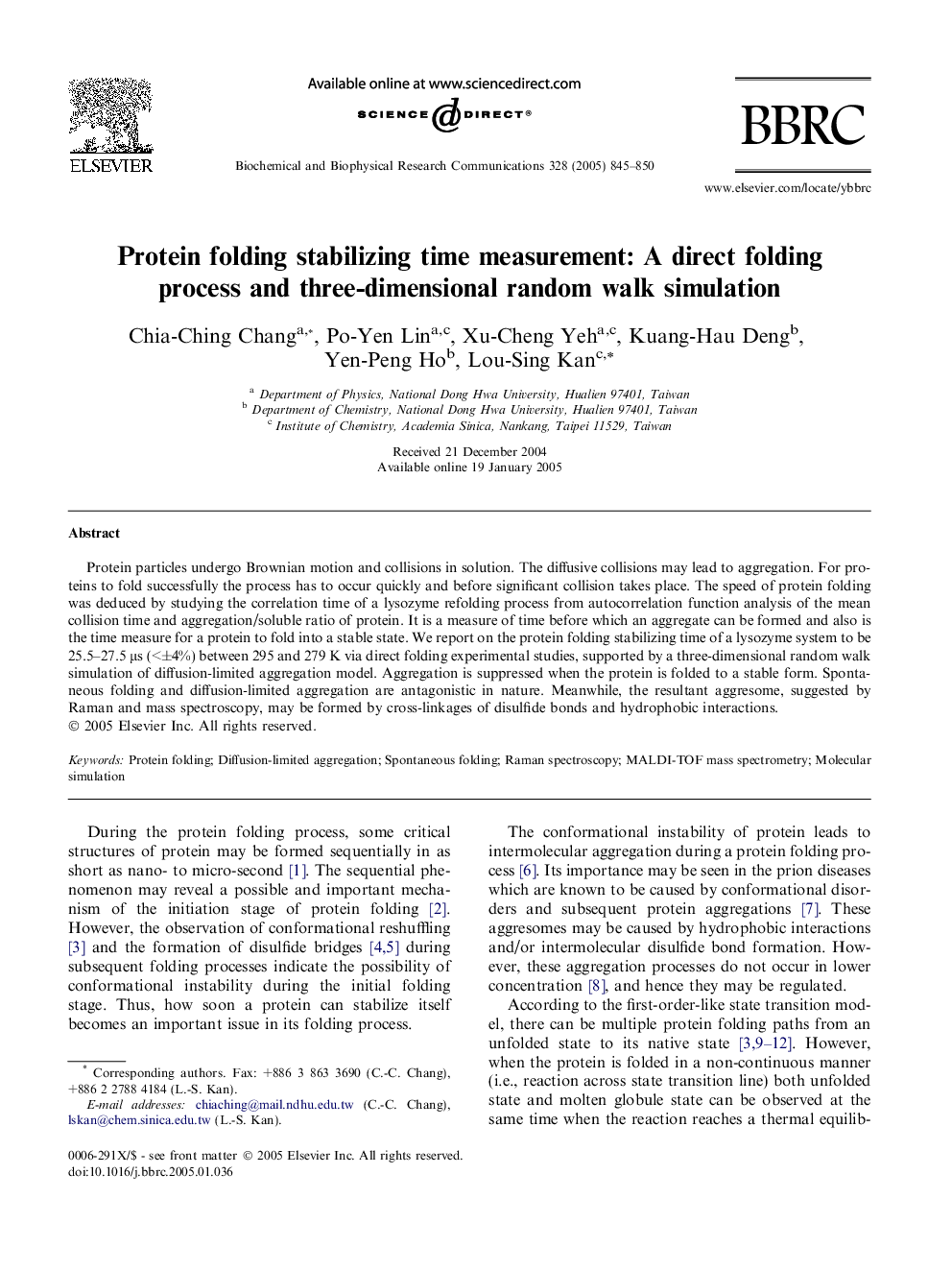| Article ID | Journal | Published Year | Pages | File Type |
|---|---|---|---|---|
| 10770561 | Biochemical and Biophysical Research Communications | 2005 | 6 Pages |
Abstract
Protein particles undergo Brownian motion and collisions in solution. The diffusive collisions may lead to aggregation. For proteins to fold successfully the process has to occur quickly and before significant collision takes place. The speed of protein folding was deduced by studying the correlation time of a lysozyme refolding process from autocorrelation function analysis of the mean collision time and aggregation/soluble ratio of protein. It is a measure of time before which an aggregate can be formed and also is the time measure for a protein to fold into a stable state. We report on the protein folding stabilizing time of a lysozyme system to be 25.5-27.5 μs (<±4%) between 295 and 279 K via direct folding experimental studies, supported by a three-dimensional random walk simulation of diffusion-limited aggregation model. Aggregation is suppressed when the protein is folded to a stable form. Spontaneous folding and diffusion-limited aggregation are antagonistic in nature. Meanwhile, the resultant aggresome, suggested by Raman and mass spectroscopy, may be formed by cross-linkages of disulfide bonds and hydrophobic interactions.
Keywords
Related Topics
Life Sciences
Biochemistry, Genetics and Molecular Biology
Biochemistry
Authors
Chia-Ching Chang, Po-Yen Lin, Xu-Cheng Yeh, Kuang-Hau Deng, Yen-Peng Ho, Lou-Sing Kan,
